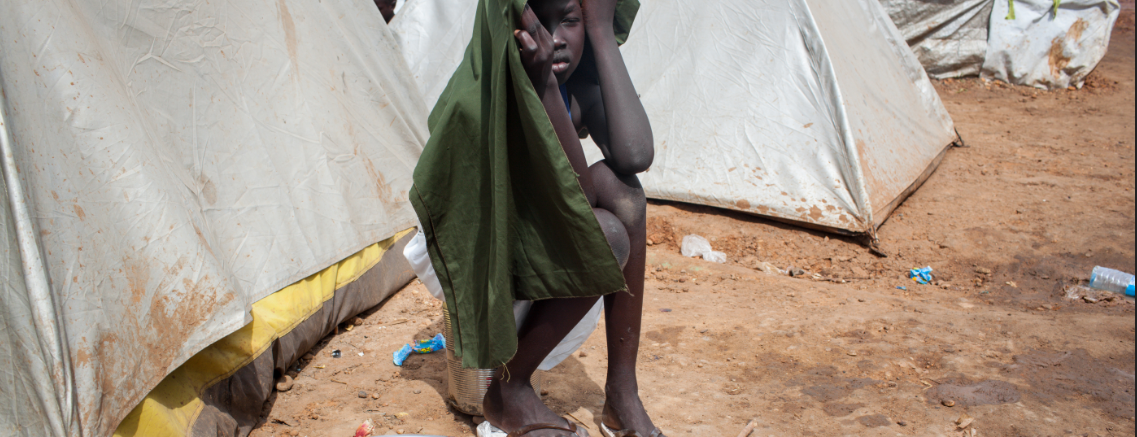South Sudan has a hot and dry humid equatorial climate, with seasonal rains. The latter are important for carrying out agricultural activities, fishing and pastoralism. However, rains can also result in periodical flooding over large territories. The northeast and southeast of the country are the driest and are the ones with the highest levels of food insecurity.
Multiple sources [1]report that South Sudan has experienced changing climate conditions and weather patterns over the past several decades. Average temperatures have increased by around 1-1.5°C since the 1970s, elevating the incidence of extreme heat conditions.
Climate sensitive activities like agriculture, forestry resources and fisheries are the main source of livelihoods for up to 95% of the population of South Sudan. In this, women are the most vulnerable to climate shocks and its consequences[2].
While flooding and drought are a regular part of the hydro-meteorological cycle in parts of South Sudan, the climate change-induced occurrence of extreme weather events, as well as man-made environmental changes, has contributed to an additional shift in the occurrence of these water-related hazards, further hindering food security and contributing to higher rates of internal displacement[3].
USAID’s findings[4] report that increased temperatures and variability of rainfalls may lead to several impacts on the agricultural sector:
• Increased evapotranspiration in plants and reduction of soil moisture, increasing the amount of water crops will need.
• Potential increase in pest and pathogen outbreaks in crops and livestock.
• Increased evapotranspiration, combined with prolonged dry periods, leading to shrinking wetlands, and perennial rivers becoming seasonal. This could negatively impact pastoralists access to water resources and reduce fishing resources by reducing the health and size of fish.
• Crops that reach their thermal maximum temperature producing less yields.
• Combined with changing rainfall patterns, desertification may increase, particularly in the north and southeast of South Sudan, and the Sahel shifting southward, leading to changing habitats.
• Increased competition for water resources during droughts between pastoralists and farmers, potentially leading to increased local conflict.
• Floods decreasing crop and livestock yields.
• Delay or shortening of rainy season causing crop failure or reducing water resources, leading to decreased livestock health.
• Extreme flooding or drought leading to the loss of grazing area or access to water for pastoralists.
• Droughts leading to potential drop in water table, drier seasonal rivers, and reduction of wetland size. The combination of drought and high temperatures might contribute to wildfires
that destroy grazing and agriculture habitats.
• Grains and cereals – the main staples in the country – are especially sensitive to changes in rainfall, and almost 70% of the variability in their production can be explained by variations in rainfall.

[1] SOUTH SUDAN CLIMATE VULNERABILITY PROFILE: SECTOR- AND LOCATION-SPECIFIC CLIMATE RISKS AND RESILIENCE RECOMMENDATIONS MAY 2019
Microsoft Word – USAID_Camdus Group_South Sudan Climate Vulnerability Profile to Improve Resilience.docx (climatelinks.org)
[2] South Sudan Flooding Situation Report: Inter-Cluster Coordination Group – As of 15 September 2021
https://reliefweb.int/report/south-sudan/south-sudan-flooding-situation-report-inter-cluster-coordination-group-15
[3] FAO, South Sudan Emergency Livelihood Response Programme 2021–2023
https://reliefweb.int/sites/reliefweb.int/files/resources/cb4944en.pdf
[4] SOUTH SUDAN CLIMATE VULNERABILITY PROFILE: SECTOR- AND LOCATION-SPECIFIC CLIMATE RISKS AND RESILIENCE RECOMMENDATIONS MAY 2019 https://www.climatelinks.org/sites/default/files/asset/document/USAID_The%20Cadmus%20Group_South%20Sudan%20Climate%20Vulnerability%20Profile%20to%20Improve%20Resilience.pdf
Picture by Shutterstock

